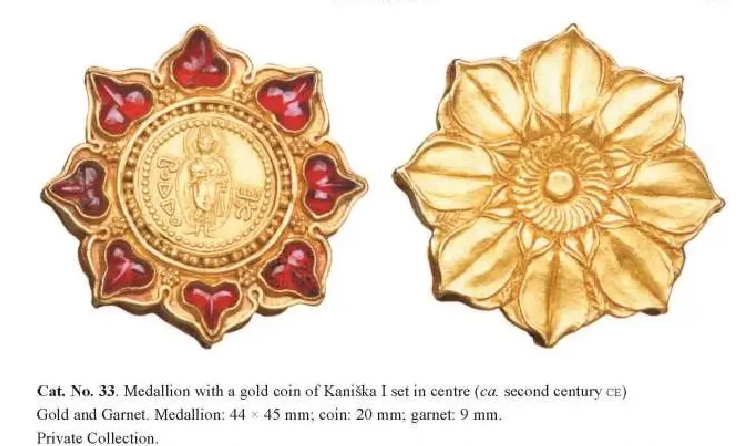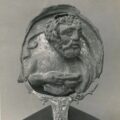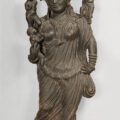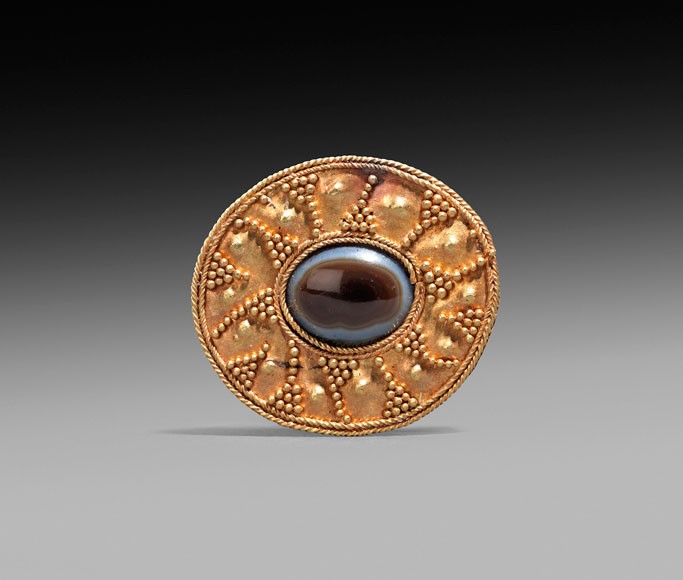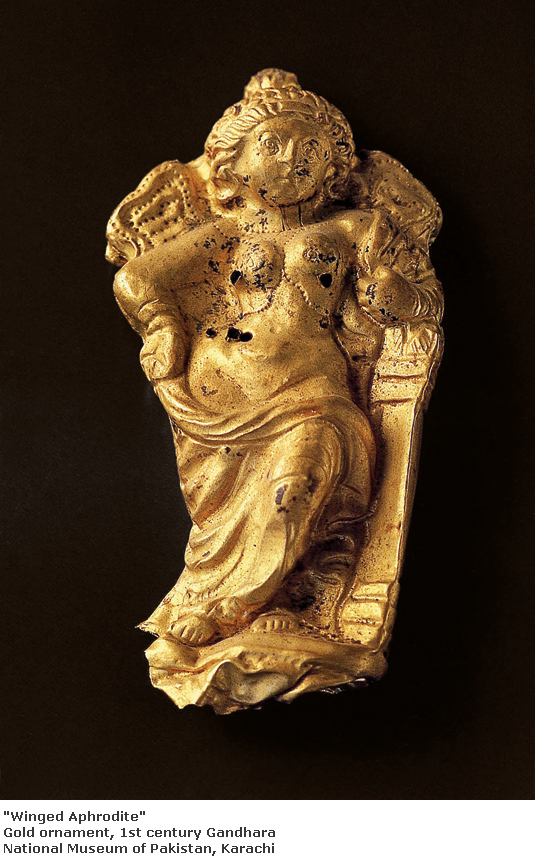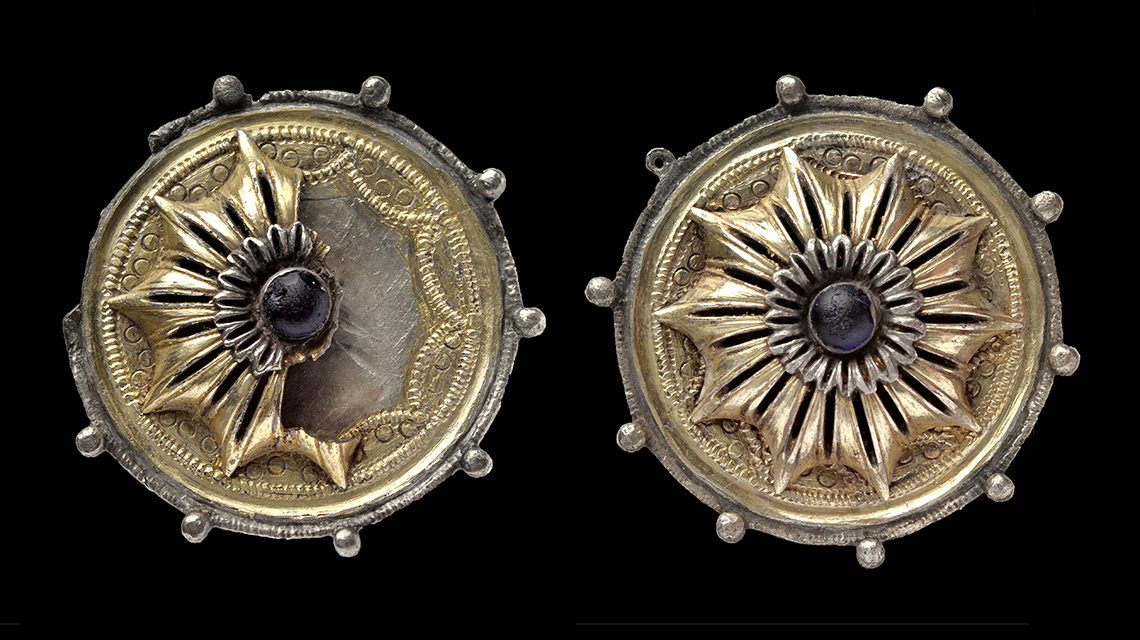The Cleveland Art and V&A museums have two almost identical pendants that look like made of a similar matrix. Both pendants are dated on the 1st-2nd century and follow the same pattern. They are a conflation of local and Hellenistic images of divinities. Medallions only differ in details, and in the identification of a goddess.
Both medallions are made of gold with garnets, the one from V&A has partially preserved white ceramic beads imitating pearls in the frame, and have diameter 5 cm.
UPDATE V&A now describes the medallion: “Pendant with the goddess Hariti, Gold repousse, with garnet and pearls, 1st-2nd C. Taxila.”
Medallion from The Cleveland Art is described by the museum as an image of Sri (Shri), goddess of good fortune, and her depiction with cornucopia refers to the Greek goddess Tyche. Although on the VMIS website goddess is describe as Hariti. Dated ca 100-199 CE, made in Saka-Parthian style, comes from Sirkap. Both sources say that gemstone inlay is made of carnelian, which seems to be wrong.



Medallion with goddess Hariti from the V&A Museum



Medallion from V&A, back side

See also an article “Gold Pendant from Sirkap” by William E. Ward >> The Bulletin of the Cleveland Museum of Art
Vol. 41, No. 8 (Oct., 1954), pp. 192-193, 195 (3 pages)
Published By: Cleveland Museum of Art
Cross-cultural Innovations in Art, Design and Animation School of Fine Arts, Amity University, Kolkata; Arputharani Sengupta https://www.academia.edu

Fake?
Just for comparison, a medallion from a Thailand auction house, described as Greek, made from before 1000
https://www.trocadero.com/stores/uddiyanaart/items/1370641/ancient-gold-gold-pendant





